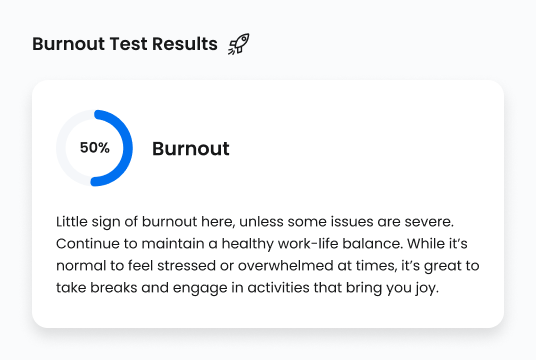Burnout test

Determine your state of emotional exhaustion
Benefits
The burnout test is basically a stress questionnaire that we provide online as a free burnout assessment tool for you. Especially if you've been struggling to keep up with work or personal responsibilities, and feel like you're constantly running on empty, you're not alone. Burnout is a very real and common experience, especially in today's fast-paced world, and especially post-COVID.
Determine your state of emotional exhaustion
How you can use this test?
How it works?
you’re at ease, undisturbed
and ready to focus.
you through the process. It’s
easy - just go with your gut
feeling.
you will receive your
feedback immediately
anyone, with just a click of a
button
What's Inside? Get immediate feedback by measuring these traits in you
Burnout test
Assessment Insights
Scientific and Empirical Foundations
Development of the Maslach Burnout Inventory: Maslach, C., & Jackson, S. E. (1981). The measurement of experienced burnout. Journal of Organizational Behavior, 2(2), 99-113. Burnout and workload: Bakker, A. B., Demerouti, E., & Schaufeli, W. B. (2003). Dual processes at work in a call centre: An application of the job demands-resources model. European Journal of Work and Organizational Psychology, 12(4), 393-417. Burnout and self-care: Pines, A., & Aronson, E. (1988). Career burnout: Causes and cures. New York, NY: Free Press. Burnout and mental health: Iacovides, A., Fountoulakis, K. N., Kaprinis, S., & Kaprinis, G. (2003). The relationship between job stress, burnout and clinical depression. Journal of Affective Disorders, 75(3), 209-221. Burnout, productivity, and job satisfaction: Leiter, M. P., & Maslach, C. (1988). The impact of burnout on organizational commitment. Journal of Organizational Behavior, 9(3), 259-273. Interventions for burnout: Awa, W. L., Plaumann, M., & Walter, U. (2010). Burnout prevention: A review of intervention programs. Patient Education and Counseling, 78(2), 184-190.


